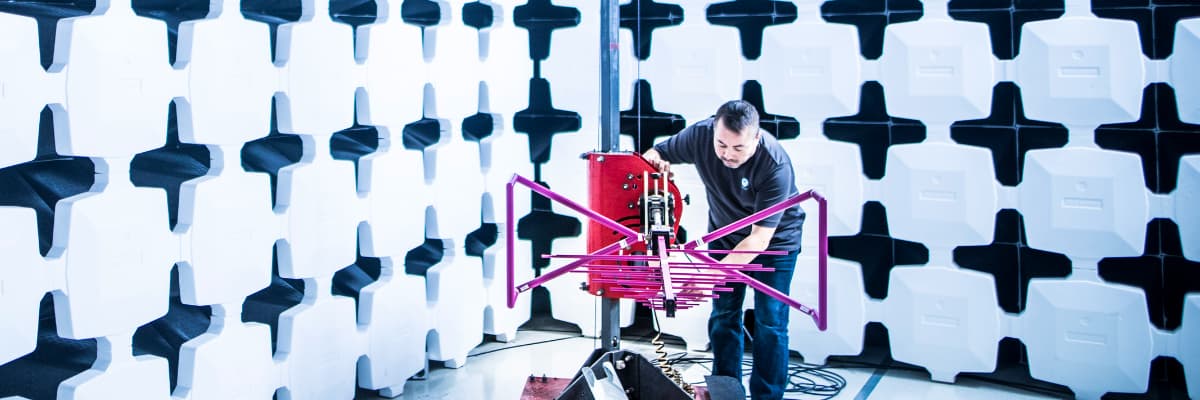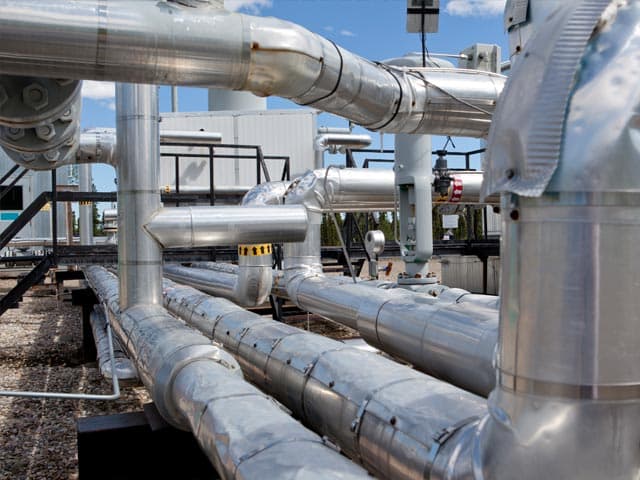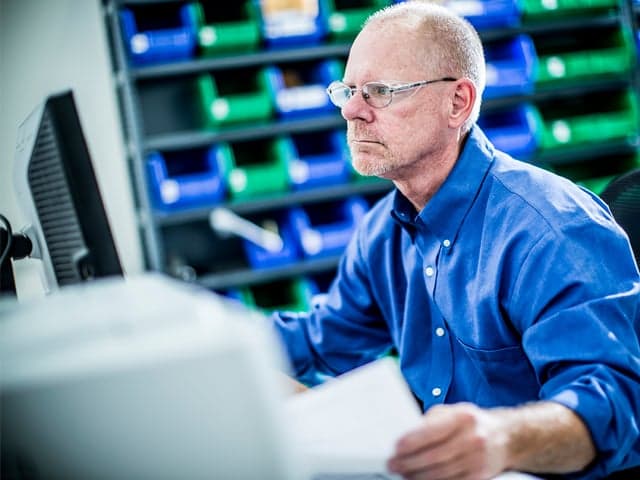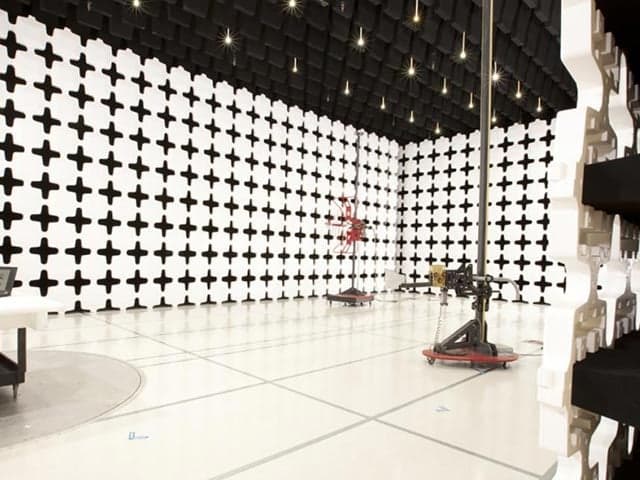IECEE CB Scheme Testing and Certification
Element provides manufacturers with simplified and streamlined testing and certification under the IECEE CB Scheme, ensuring fast and cost-effective global market access across more than 50 countries. With over 20 years of experience and state-of-the-art laboratories, we help your products meet the highest international safety standards while simplifying the process for national approvals.

What is IECEE CB Scheme testing and certification at Element?
The IECEE CB Scheme is an international mutual acceptance system for the safety of electrical and electronic components, equipment, and products, allowing you to test and certify just once then gain market access across all countries within the scheme (and often in countries outside of this group). It is operated by the IEC System for Conformity Assessment Schemes for Electrotechnical Equipment and Components (IECEE). In 2024, over 120,000 CB certificates were issued by its 90+ member certification bodies (NCB). At Element, we are one of those National Certification Bodies (NCB), and so can provide both the test and certification aspect, plus support your wider global market access needs.

What can Element offer you for IECEE CB Scheme testing and certification?
Key services offered
Key services offered
Element's one-stop-shop approach to IECEE CB Scheme testing combines CB testing and certification under a single roof. We handle everything from initial application through testing and final certification, including management of national differences and specific country requirements. Our streamlined process prioritizes your certification applications, accelerating market access while maintaining rigorous safety standards.
Products we test
Products we test
We provide comprehensive testing across multiple product categories including audiovisual equipment, information technology hardware, communication devices, domestic appliances, laboratory equipment, batteries, and medical devices. Our expertise covers all major electrical and electronic components and products requiring international safety certification, ensuring complete coverage for your testing needs.
Which labs offer this service
Which labs offer this service
Our state-of-the-art CB Test Laboratories are strategically located in the UK, US, Germany, and China. The UK facility houses our National Certification Body, while all locations maintain ISO/IEC 17025:2017 accreditation. Each laboratory is equipped to handle comprehensive safety testing across multiple product categories. You can find your nearest lab on our Locations page.
Additional Services and Support
Additional Services and Support
Beyond CB Scheme certification, we offer complementary services including advisory support, NRTL/SCC compliance, CE/UKCA marking documentation, EMC testing, and specific national certifications. Our global network of experts provides end-to-end support throughout your certification journey, from initial consultation to final market approval.
Standards we test to and products we test
- IEC 62368 (Audio/video/IT equipment)
- IEC 60950-1 (Information technology)
- IEC 60065 (Audiovisual equipment)
- IEC 60335 (Domestic appliances)
- IEC 61010 (Laboratory equipment)
- IEC 62133 (Batteries)
- IEC 60601 (Medical devices and EMC)
- IEC 61326 (EMC)
- Audio/video and IT equipment
- Information technology hardware
- Communication technology equipment
- Domestic appliances
- Laboratory equipment
- Medical devices
- Batteries
- Electronics
- Office equipment
- Measuring equipment
Your Challenges, Our Solutions
Local partner for international product compliance
Your one-stop-shop to save time and money
A single test to bring your products to market faster
One certification to enter global markets
Element Experts at your service
Why Choose Element

Leading Certification Body Test Laboratory
Regulatory Body Recognition
Further Accreditations
Additional Testing Available
20+ years experience
50+ member countries
4 strategic locations
8,500 experts

Frequently asked questions
How does the CB certificate process work at Element?
The process is straightforward and in simple terms, consists of the application by you, the testing by the CBTL, a review of the test report by the NCB, and finally, the issuing of the certificate.
- Submit an application to the Element NCB or the Element CBTL where you want testing completed.
- The NCB confirms the choice of CBTL for testing.
- Provide product samples and documentation to the CBTL.
- CBTL tests your product to the relevant standard.
- CBTL sends the test report to the NCB.
- NCB reviews the report and issues the CB certificate.
- Use the CB certificate to get local certifications in other countries, or for direct market access.
How long is a CB certificate valid for?
CB certificates don't expire, but they are typically accepted by most regulatory authorities for 3 years from the issue date. Updates may be needed if there are design changes or updates to the relevant standards.
Is the CB certificate only used for getting approval marks in IECEE member countries?
No. In addition to the member countries of the IECEE, CB certificates can also provide direct market access into some countries. Whilst the scheme was originally intended as a mutual recognition agreement between members, now only one third of all CB certificates (about 40,000 in 2024) are used to directly obtain a certification mark from an IECEE member body. The other two-thirds of CB certificates (approximately 80,000) are used for direct market access, for government driven regulatory compliance, for non-IECEE certification marks, or in business-to-business agreements.
How is CB Certification different to CE/UKCA marking?
CB certification is a full third-party test and assessment process to internationally agreed standards and testing rules. This differs from CE/UKCA which only use standards to support the essential requirements of the EU directive or regulation. Hence a CE/UKCA test report or certificate may not cover all of the requirements of the standard – something that can be problematic outside of the EU/UK. While separate from CE/UKCA marking, CB certification often covers most of the essential safety requirements for these marks, and hence CB test reports with a CENELEC national differences section will support your technical file for CE/UKCA Declaration of Conformity.
What is the IEC?
The IEC or International Electrotechnical Commission is a standards organization that sets global standards for electrical, electronic, and related technologies. It promotes safety, efficiency, and reliability to support international trade and sustainable development. The IEC works with 88 member countries and thousands of experts to create voluntary international standards and offer globally accepted conformity assessment schemes (IECEE, IECEx, IECQ and IECRE)
What is the IECEE CB Scheme?
The IECEE CB Scheme is an international system for mutual acceptance of test reports and certificates dealing with the safety of electrical and electronic components, equipment, and products. It allows manufacturers to access global markets without costly and time-consuming repeating of tests in each country. It operates under the IEC’s conformity assessment system.
What does the CB Scheme stand for?
The acronym CB Scheme stands for “Certification Bodies’ Scheme”.

Explore our global network of labs and find your nearest location
VIEW ALL LOCATIONSRelated services

Product Certification Services
Unlock global market access with Element's expert product certification services. Streamline compliance for CE, UKCA, FCC and more. Fast, reliable, and global. Learn More.

UKCA Marking – Testing, Certification, and Guidance
Element provides UKCA marking, testing, and certification services to help manufacturers navigate UK regulatory changes. We streamline compliance, ensuring market access and seamless transitions from CE marking.

CE Marking Services
Accelerate EU market access with Element's CE Marking services. Expert testing, documentation & compliance support for electrical products. Get certified faster.

Explosive Atmosphere Testing and Certification
Element ensures your products comply with global explosive atmosphere testing regulations, including Global IECEx certification, ATEX certification for Europe, UKEX for United Kingdom, HazLoc certification for North America & DSEAR in the UK.

Product Compliance Testing Services
Ensure global product compliance with expert testing & certification for FDA, REACH, RoHS, CE & more. Fast, tailored support for complex market needs.

Wireless Device Testing & Certification
Get your wireless devices to market faster with Element's accredited testing services. Expert guidance through compliance, certification and global approvals for all wireless technologies.

Electromagnetic Compatibility (EMC) Testing & Electromagnetic Interference (EMI) Testing & Certification
Element provides accredited EMC and EMI testing and certification services, helping businesses meet regulatory requirements, reduce costly redesigns, and bring products to market faster through expert compliance support.
Speak to our team of experts
Which countries can you access through the IECEE CB Scheme?
Our IECEE CB Scheme services ensure your electrical and electronic products meet international safety standards and can be readily accessed and accepted in the 50+ member body countries for Global Market Access.
- Argentina
- Australia
- Austria
- Bahrain
- Belarus
- Belgium
- Brazil
- Bulgaria
- Canada
- Chile
- China
- Côte d'Ivoire
- Croatia
- Czech Republic
- Denmark
- Finland
- France
- Germany
- Greece
- Hungary
- India
- Indonesia
- Iran
- Israel
- Italy
- Japan
- Kenya
- Korea Republic of
- Malaysia
- Mexico
- Netherlands
- New Zealand
- Nigeria
- Norway
- Pakistan
- Poland
- Portugal
- Russian Federation
- Saudi Arabia
- Serbia
- Singapore
- Slovenia
- South Africa
- Spain
- Sweden
- Switzerland
- Thailand
- Türkiye
- Ukraine
- United Arab Emirates
- United Kingdom
- USA
- Vietnam

